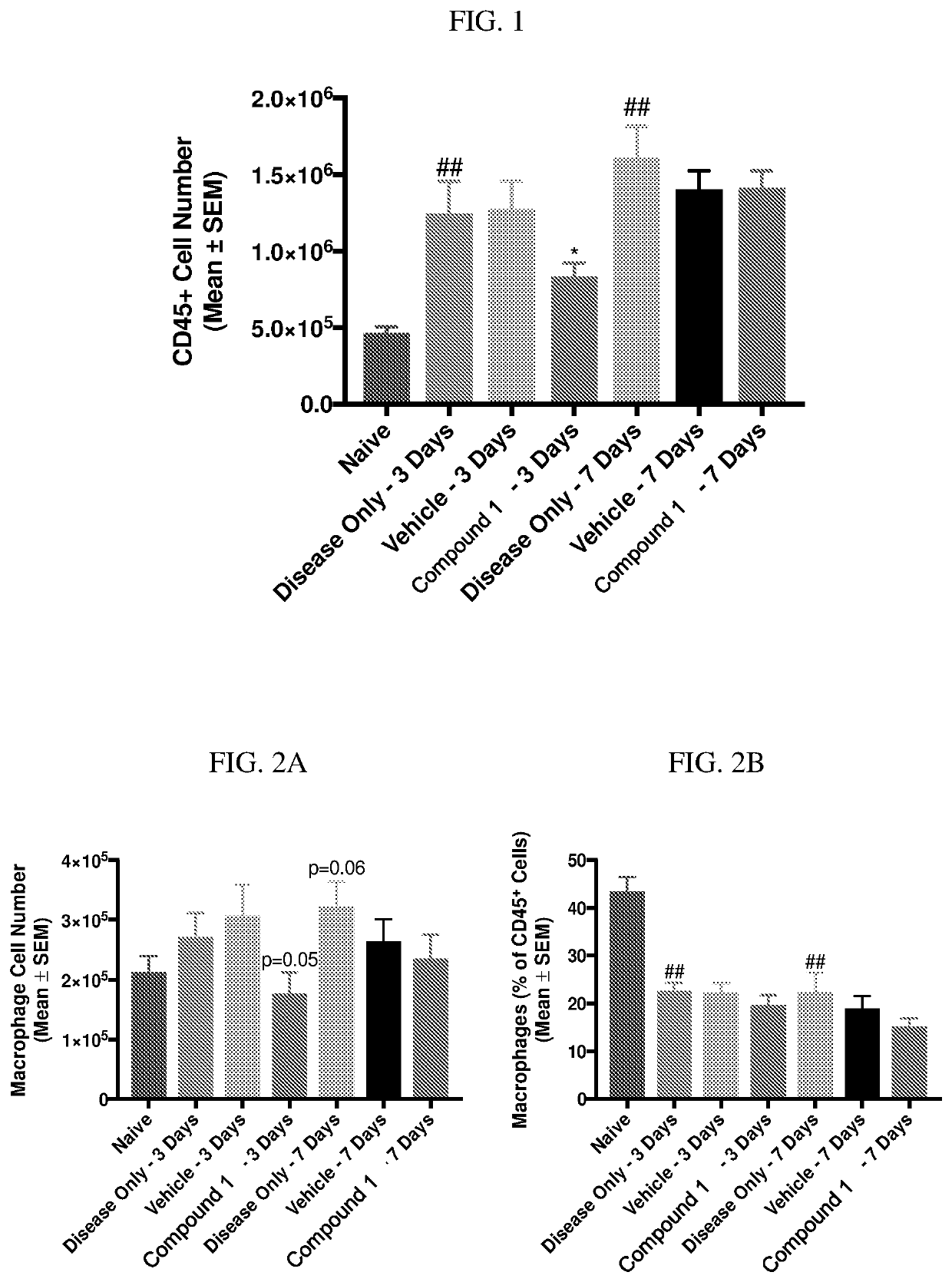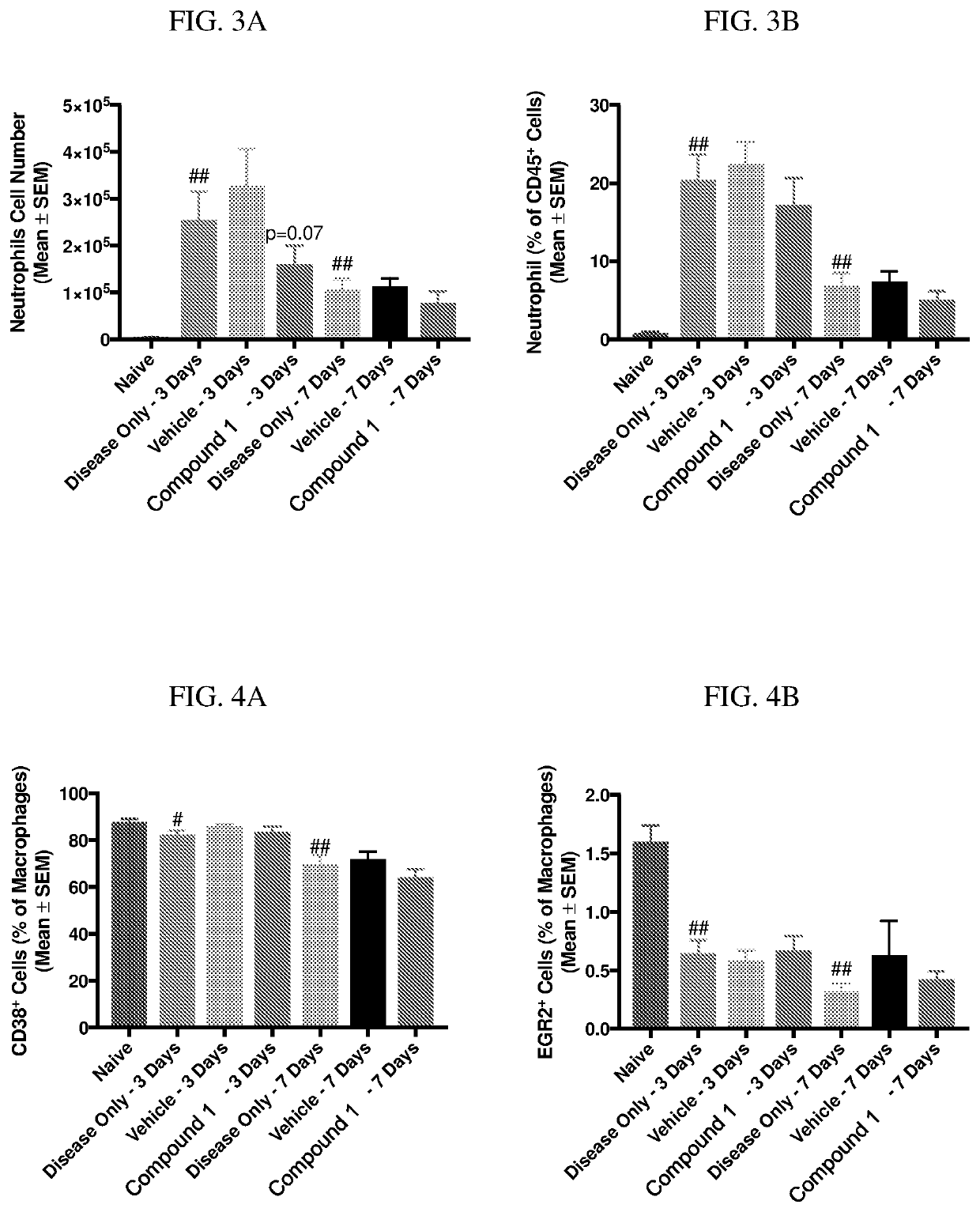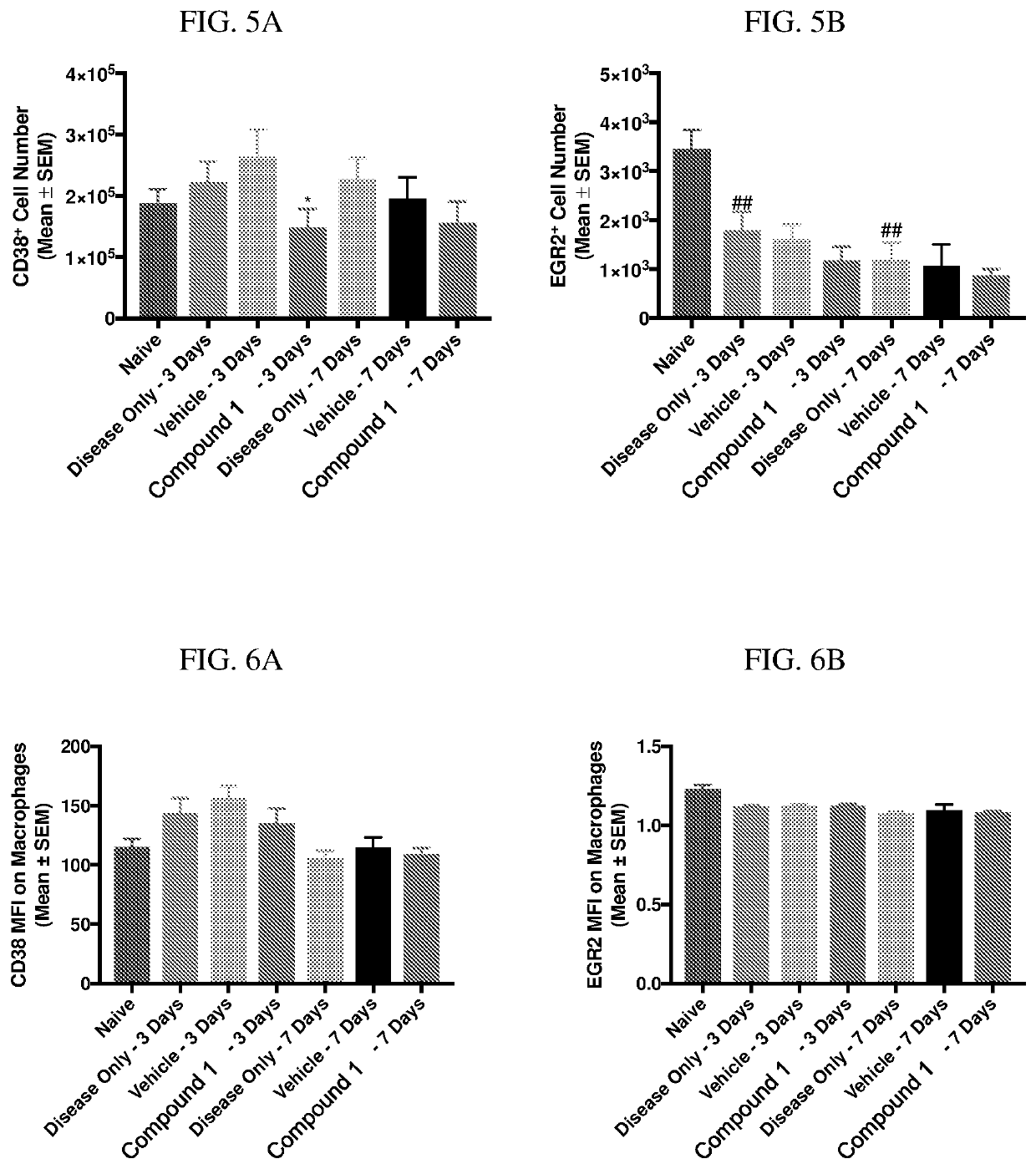Novel uses
- Summary
- Abstract
- Description
- Claims
- Application Information
AI Technical Summary
Benefits of technology
Problems solved by technology
Method used
Image
Examples
example 1
l Inflammation Assessment Using Mouse Zymosan Pleurisy Model
[0194]Zymosan is injected into the pleural cavities of mice in order to induce sterile inflammation. Infiltration of leukocytes, neutrophils, and macrophages are monitored at days 3 and 7 following injection. Detection of various cell types are identified according to the gating strategy outlined in Table 1 below.
TABLE 1Cell types and identifiable markers for flow cytometryCell TypeExpressed MarkersLeukocytesCD45+NeutrophilsCD45+ / Ly6G+MacrophagesCD45+ / Ly6G− / CD19− / CD11c− / CD11b+ / F4 / 80+M1 MacrophagesCD45+ / Ly6G− / CD19− / CD11c− / CD11b+ / F4 / 80+CD38+M2 MacrophagesCD45+ / Ly6G− / CD19− / CD11c− / CD11b+ / F4 / 80+ / EGR2+
[0195]In this model, injection of zymosan causes the recruitment of various waves of leukocytes, which are observed and recorded. Exudate volume increases to a maximum over a period of 24 hours, and neutrophils increase within 4 hours and reach a maximum by 48 hours. Lymphocytes of the adaptive immune system enter at a later stage, ...
example 2
PDE1 Inhibitor on Microglia Chemotaxis Assay
[0202]BV2 cells were added to upper chamber of a 5 μm pore Transwell 96-well plate over a reservoir containing 100 μM ADP and incubated at 37° C. with 5% CO2 for 4 hours. After the incubation cells were harvested with pre-warmed cell detachment solution for 30 minutes in the same incubation conditions. 75 μl of this cell detachment solution was combined with 75 μl of culture medium in a new 96 well plate compatible with a fluorescence reader. Cell number in bottom chamber was determined by adding CyQuant® GR dye and reading in the Envision fluorescence reader at 480 nm EX / 520 nm EM. CyQuant® GR dye exhibits strong fluorescence when bound to nucleic acid and is accurate enough to measure differences down to single cells. As shown in FIG. 10, the presence of the PDE1 inhibitor Compound 1 showed a marked dampening effect on the motility of the BV2 cells across the membrane, providing additional evidence that Compound 1 dampens the release of ...
example 3
of Inflammatory Biomarkers Using Mouse Zymosan Pleurisy Model
[0203]Zymosan was injected into the pleural cavities of mice in order to induce sterile inflammation by the methods discussed in Example 1. Compound 1 was administered to test subjects to observe the effects on a variety of inflammatory biomarkers. Results were recorded after 4 hours. The subjects showed a clear decrease in cytokine markers following administration of Compound 1. IFNγ, IL-1β, MCP1-β and TNF-α decreased following administration of Compound 1 in all serum and plasma samples. IL10 showed a decrease in serum.
[0204]Lipids are known to be involved in regulation of a multitude of cellular responses including cell growth and death, and inflammation / infection, via receptor-mediated pathways. Various lipids are involved in both the initiation and resolution of inflammation. Pro-resolving lipid mediators are produced naturally in the body from unsaturated fatty acids, such as arachidonic acid (AA) and docosahexaenoic...
PUM
 Login to View More
Login to View More Abstract
Description
Claims
Application Information
 Login to View More
Login to View More - R&D
- Intellectual Property
- Life Sciences
- Materials
- Tech Scout
- Unparalleled Data Quality
- Higher Quality Content
- 60% Fewer Hallucinations
Browse by: Latest US Patents, China's latest patents, Technical Efficacy Thesaurus, Application Domain, Technology Topic, Popular Technical Reports.
© 2025 PatSnap. All rights reserved.Legal|Privacy policy|Modern Slavery Act Transparency Statement|Sitemap|About US| Contact US: help@patsnap.com



